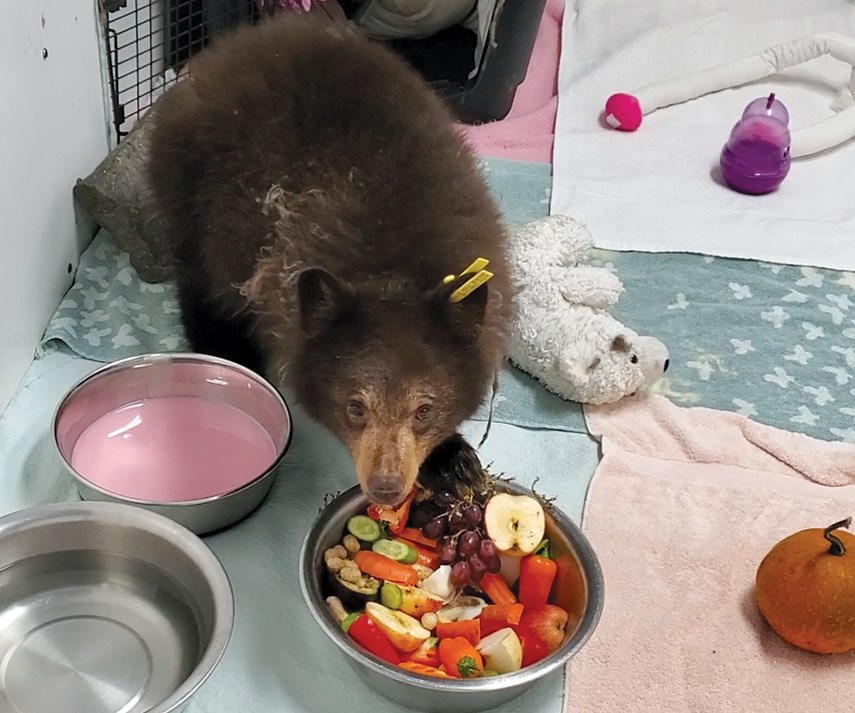Conservation officers and animal welfare advocates are urging the public to be careful about their garbage after an orphaned bear cub was captured in a residential area of North Vancouver and taken to a wildlife rehabilitation centre recently.
Conservation officers and North Shore Black Bear Society volunteers responded to multiple reports of a small bear cub roaming neighbourhoods in the Park & Tilford area at the end of December.
One panicked driver called to report the tiny cub had been seen weaving through traffic near Highway 1, said Christine Miller of the black bear society.
“It was a very young bear,” in poor condition, said Sgt. Simon Gravel of the Conservation Officer Service.
Fortunately, conservation officers were able to trap the young bear and take it to Critter Care wildlife rehabilitation centre in Langley, where the cub – nicknamed Roxxy – has about doubled her weight.
Roxxy was the second bear cub to end up at Critter Care from the North Shore in the past year. A cub from West Vancouver was also taken there in 2019.
Another black bear reported in the Montroyal neighbourhood seeking food in household garbage at the end of December wasn’t so lucky.
In that case, the bear was injured – most likely after having been hit by a car, said Gravel. It was destroyed by conservation officers after consultation with a veterinarian.
While many people assume black bears are hibernating in winter, Gravel said it’s not that uncommon for bears to come out of their dens – especially if they smell food nearby.
“It’s very common actually to see black bears getting out of bed in the middle of the winter to seek food, unfortunately,” he said.
Because of the proximity of natural forested areas, many bears den in areas not far from residential areas, he added.
“We have some urban bears on the North Shore that are denning almost in people’s backyards.”
Bears aren’t the only wildlife out and about. Early this month, conservation officers also received reports of cougar sightings around Mosquito Creek, said Gravel. “It’s really not unusual,” he said. “Cougars are active in the winter. Those animals are seeking food.”
Gravel added there were no reports of concerning behaviour.
In the case of bears, however, the less garbage and human-produced food the animals have access to, the greater chance the bears will stay asleep in their dens until spring when natural food sources are more abundant.
“If the effort needed to seek food is greater than the effort to rest, then they’ll choose to rest,” said Gravel.
Conservation officers stepped up enforcement last fall in an effort to drive that message home.
Between September and November, local conservation officers handed out 12 warnings and eight $230 violation tickets under the Wildlife Act to homeowners in neighbourhoods ranging from the British Properties, Montroyal, and the Sentinel Hill area.
Officers also handed out 11 dangerous wildlife protection orders – telling homeowners or businesses to take specific actions like securing their garbage or keeping pet food indoors. Failure to comply with those orders nets a $575 fine.
Gravel said in general people are aware of what they should be doing, but that doesn’t always translate into proper action.
“They didn’t take the next step,” he said. “They maybe don’t have a bear in their backyard right now. They maybe don’t think it applies to them. And all of a sudden you do have a bear in your backyard and then it’s a problem this time.”
A total of 12 bears were destroyed by conservation officers on the North Shore in 2019 – 10 because they had become habituated to garbage or other human attractants and two because they were injured.
Most North Shore bears come out of their winter dens and start to get active again around April.



